
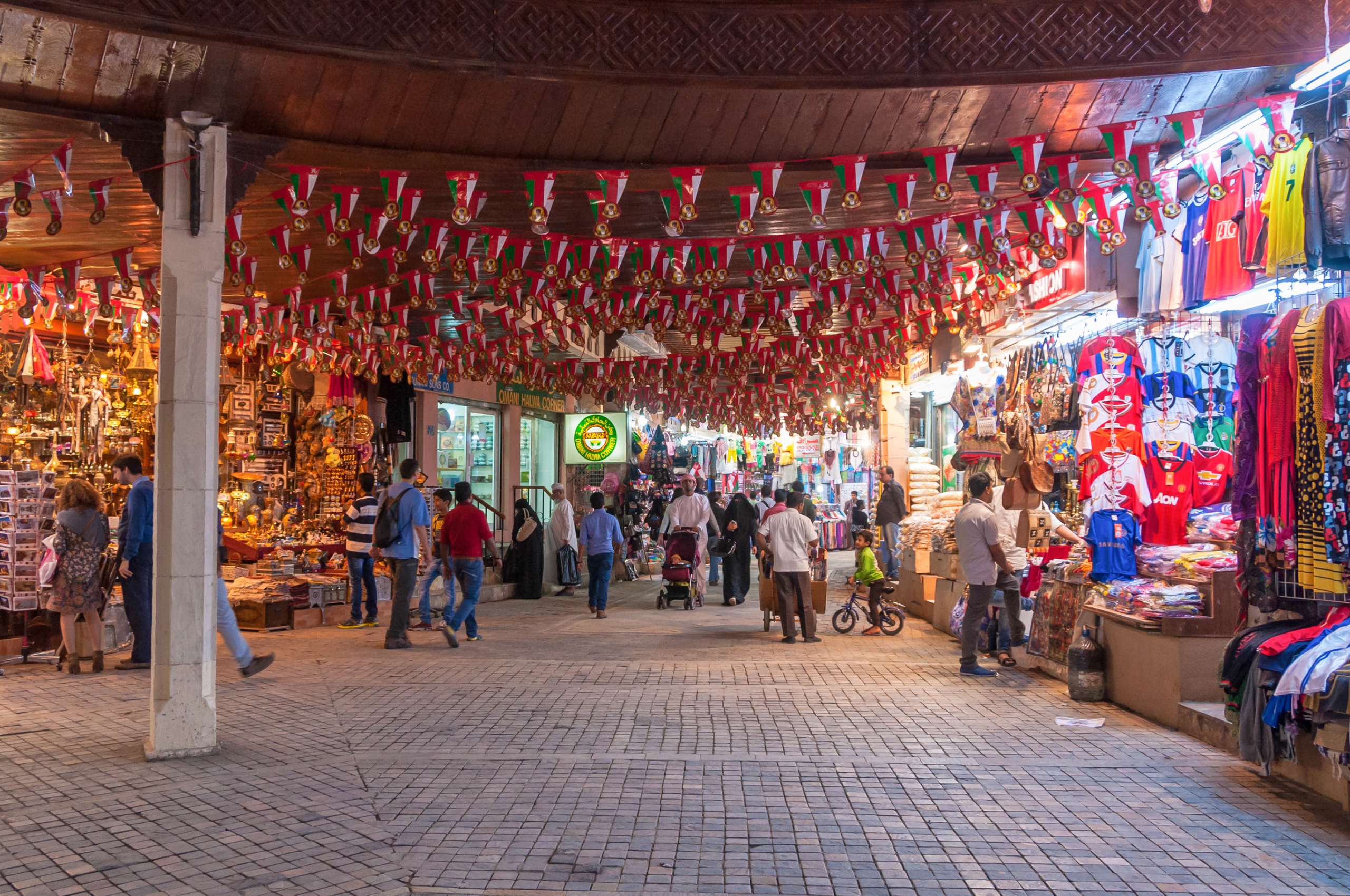
Exploring Mutrah Souq Muscat: A Shopper’s Paradise in Oman
The winding alleys of Mutrah Souq Muscat transport visitors to a realm where centuries-old trading traditions naturally mix with modern commerce. Golden rays of sunlight pierce through the souq’s ornate wooden roof while the air fills with an aromatic blend of frankincense, spices, and Arabian perfumes.
This historic marketplace ranks among Oman’s oldest and most cherished treasures. People call it “The Market of Darkness” because of its maze-like corridors and dim lighting that create an enchanting shopping atmosphere. The market has managed to keep its authentic charm while adapting to today’s needs.
Let me share everything about this fascinating marketplace – from its rich history and architectural beauty to practical shopping tips and cultural etiquette. You’ll find traditional Omani crafts, gleaming gold jewelry, and exotic spices in this remarkable shopping destination. I’ll help you direct your way through this extraordinary experience.
Historical Journey Through Time
Let me take a closer look at the rich history of Mutrah Souq, which transformed from a humble trading post into one of Oman’s most iconic marketplaces. Dating back over 200 years, this remarkable marketplace has seen countless traders, cultures, and traditions come and go.
Origins and Evolution of Mutrah Souq
Sultan Said bin Sultan established this marketplace in the 1820s, at the time when sailing ships dominated trade routes. A simple structure of mud and palm leaves grew into a significant commercial hub. The Portuguese occupation in the 16th century changed everything, making Mutrah the commercial heart of Muscat.
The souq had two distinct sections: one for retail goods and another for wholesale products. The first shops, built roughly 300 years ago, were simple structures with basic shelves to display goods without any roofing.
Architectural Marvel of the Market
The souq’s design shows centuries of thoughtful adaptation to Oman’s climate. Several distinctive features stand out:
- Narrow, winding alleys that create natural cooling effects
- Traditional wooden lattice ceilings that filter sunlight
- Intricately carved wooden archways at entrances
- Mud-brick walls that naturally regulate temperature
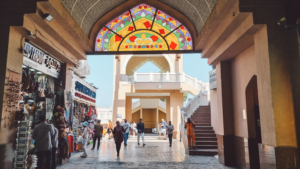
Cultural Significance in Omani Heritage
The souq stands as a melting pot of cultures. Traders from a variety of backgrounds – Arabs, East Africans, Pakistanis, Indians, and Persians – have added their unique character to this place. The marketplace became a vital meeting point for inland Omanis in the 1960s, where they found everything they needed daily.
This marketplace tells the story of Oman’s cultural progress. The souq managed to keep its position as a vital commercial and cultural crossroad, from its early days of trading frankincense and dates to becoming a modern tourist destination. Local Omani customers still prefer shopping here, even with modern malls popping up in western Muscat.
The souq’s ability to preserve its traditional essence while adapting to modern needs is remarkable. Muscat Municipality’s careful renovations have kept the popular style intact while adding modern amenities, creating a space where old and new combine smoothly.
Navigating the Labyrinth
My first visit to Mutrah Souq left me overwhelmed, but this maze-like wonder has its own logic beneath the apparent chaos. The complex network of passages that used to confuse me turned out to be a thoughtfully designed marketplace that’s both intriguing and easy to explore.
Understanding the Souq’s Layout
The Souq naturally splits into two distinct sections. The eastern part goes by “the small market” or the more mysterious “Market of Darkness” – a name it earned from its dim passages where sunlight barely reaches. The western section, “the large market,” houses wholesale vendors. Vendors selling similar items stick together, which makes price and product comparisons a breeze.
Best Entrances and Exit Points
My explorations helped me spot two main gateways into this wealth of treasures. Most visitors use the two-storey domed gateway on the Corniche near the traffic lights. Another entrance connects to the city’s old quarters, and locals from nearby Omani towns prefer this route. Getting lost might be fun, but here are some tips that worked for me:
- Just head downhill if you’re unsure – you’ll reach the sea
- Take turns at junctions to find your way back to the Corniche
- Stay away from Al Lawataya, the historic Shiite district, which has clear signs
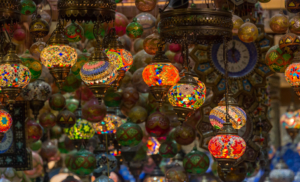
Popular Shopping Sections
The shopping areas follow a smart layout. Mornings buzz with locals buying fresh vegetables and meat in their dedicated spots. Deep inside the marketplace, you’ll find specific areas for traditional crafts, household goods, and ready-made garments. The stretch from the Prophet’s Mosque to Khawr Bimbah draws me in with its traditional taqiya caps, authentic lamps, and fresh dates.
The narrow, crisscrossed passages do more than charm visitors – they offer a cool escape from Oman’s summer heat. People flow through these alleys endlessly, creating an atmosphere that’s both lively and peaceful.
Traditional Treasures
My journey through Mutrah Souq led me to a wealth of authentic Omani craftsmanship that echoes centuries-old traditions. Each handcrafted item amazes me with its artistry and skill.
Authentic Omani Handicrafts
Traditional crafts in the souq showcase an impressive array of Omani artisanship. Some of the most fascinating pieces I’ve come across include:
- Intricately designed ceramic wares from Bahla
- Hand-woven textiles with geometric patterns
- Traditional Khanjar daggers with detailed silverwork
- Handmade baskets crafted by local artisans
- Decorative antique doors with carved patterns
These pieces serve as functional art forms that have enriched Omani daily life for generations.
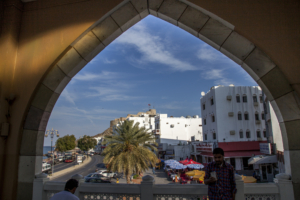
Gold and Silver Jewelry Collections
Glittering alleys of Mutrah Souq’s jewelry section taught me to identify authentic pieces by the ‘925’ stamp on silver items. Omani silversmiths create unmatched work with traditional patterns unique to this region.
Artisans carve traditional designs into silverware with precision and care. They create everything from elegant necklaces to intricate bracelets. The jewelry from Sharqiyah region stands out with its distinctive mix of gold and silver inlay that reflects the area’s historical wealth.
Spices and Traditional Perfumes
The aromatic section has become my favorite spot in Mutrah Souq. Here lies Oman’s famous frankincense, which comes in four distinct grades:
| Grade | Name | Characteristics |
| Premium | Hoojri | Whitest, most pure |
| High | Najdi | Light colored |
| Medium | Shathari | Yellow-tinted |
| Regular | Shaabi | Darker variety |
Traditional Omani perfumes fascinate me, especially the renowned Amouage fragrances. The spice selection adds another dimension – from saffron and cardamom to dried lemons and rose petals. These elements create the unique sensory experience of Mutrah Souq.
These traditional treasures remain active parts of modern Omani culture. Locals select specific grades of frankincense for their homes, pick spices for traditional dishes, and carefully choose silver pieces for special occasions.
Modern Shopping Experience
My time learning about Mutrah Souq Muscat’s changing face has shown me how this historic marketplace adopts modernity while staying true to its traditional roots. The mix of old and newly creates something special that draws both modern shoppers and those seeking authentic traditions.
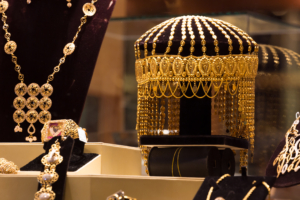
Contemporary Products and Brands
The souq has adapted beautifully to modern times. You’ll find an amazing blend of new merchandise among traditional items. These days, contemporary fashion and electronic gadgets sit right next to centuries-old crafts. The sort of thing I love is how some shops have given their traditional products a modern twist – take the perfume stores that combine classic Middle Eastern fragrances with Western styles.
Payment Methods and ATM Locations
My shopping adventures have taught me that while the souq welcomes modern payment options, you should know what works best:
| Payment Type | Acceptance | Best For |
| Cash (Omani Rials) | Universally accepted | Small purchases, better deals |
| Credit Cards | Limited to larger shops | Expensive items, jewelry |
| Mobile Payments | Growing acceptance | Select modern stores |
You’ll find these ATMs close by to make things easier:
- Bank Muscat ATM – 2 minutes from the port exit
- Bank Dhofar ATM – Near the Corniche branch
- National Bank of Oman – At the main entrance
Bargaining Etiquette and Tips
Successful bargaining at Mutrah Souq needs more finesse than science. You should know that haggling is expected, but respect and courtesy matter most. Here are some strategies that work well:
- Start with “Kam hatha?” (How much is this?)
- Begin negotiations at 40-50% of the asking price
- Show genuine interest in the item
- Maintain a friendly demeanor
- Be prepared to walk away
The bargaining culture changes between modern and traditional items. Fixed prices show up more often with contemporary products, but traditional items still follow the time-honored practice of negotiation.
Modern touches go beyond just products and payments. Vendors use social media to showcase their goods, and some even ship internationally. Yet the souq’s authentic charm shines through all these modern conveniences.
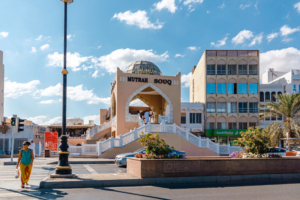
Practical Visitor’s Guide
My months at Mutrah Souq Muscat in different seasons taught me everything about this enchanting marketplace. Let me share some practical tips that will make your visit as rewarding as mine.
Best Times to Visit
The right timing can make a big difference at Mutrah Souq. The cooler months from November to March are perfect with temperatures between 17°C and 35°C. The souq follows a predictable rhythm:
| Time Period | Experience |
| Morning (8 AM-1 PM) | Quieter, better for serious shopping |
| Afternoon | Closed (1 PM-4 PM) |
| Evening (4 PM-10 PM) | Livelier atmosphere, local crowds |
Weekday mornings give you the most peaceful shopping experience. The souq really comes alive from December to February. This coincides with Omani festivals that add a special cultural touch to your visit.
Local Customs and Dress Code
The souq taught me that respecting local traditions matters a lot. Omanis are incredibly hospitable, but they value their cultural expectations. Here’s what I recommend wearing:
- Loose-fitting, non-transparent clothing
- Covered shoulders and knees
- Breathable fabrics
- Long trousers or ankle-length skirts
- Conservative necklines
A simple “As-salamu alaykum” greeting creates an instant connection with shopkeepers. This small gesture often leads to great conversations and better deals.
Photography Guidelines
Taking photos in Mutrah Souq needs a good balance of enthusiasm and respect. The most important rule is to ask for permission before photographing anyone or their shop.
My photography rules are simple:
- Skip photos in the historic Shiite district of Al Lawataya
- Follow all “no photography” signs near homes
- Keep a good distance from merchandise
- Respect local women’s privacy
Most vendors welcome photos if you show real interest in their products. A small purchase helps too. This approach lets you capture authentic moments and build good relationships with locals.
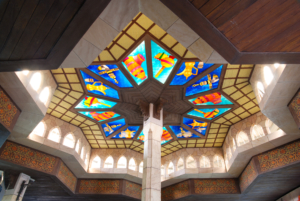
Conclusion
Mutrah Souq is proof of Oman’s rich heritage, where age-old trading traditions thrive among modern commerce. My visits to this historic marketplace have shown me an enchanting world. Here, authentic craftsmanship, aromatic spices, and warm Omani hospitality create an unforgettable shopping experience.
This magical souq captivates visitors with its traditional treasures and architectural beauty. It knows how to maintain cultural authenticity while meeting today’s needs. Each visit brings something new to find – from bargaining for handcrafted silver to sampling exotic perfumes. The atmospheric alleyways invite endless exploration.
Local customs, best visiting times, and shopping etiquette will help you experience Mutrah Souq beyond just a marketplace. This historic gem shows you authentic Omani culture, turning every shopping trip into a step back in time. Your respectful and curious approach will bring rewards that go way beyond the treasures you take home. Elevate your travel experience luxury begins with one click Book Now!
